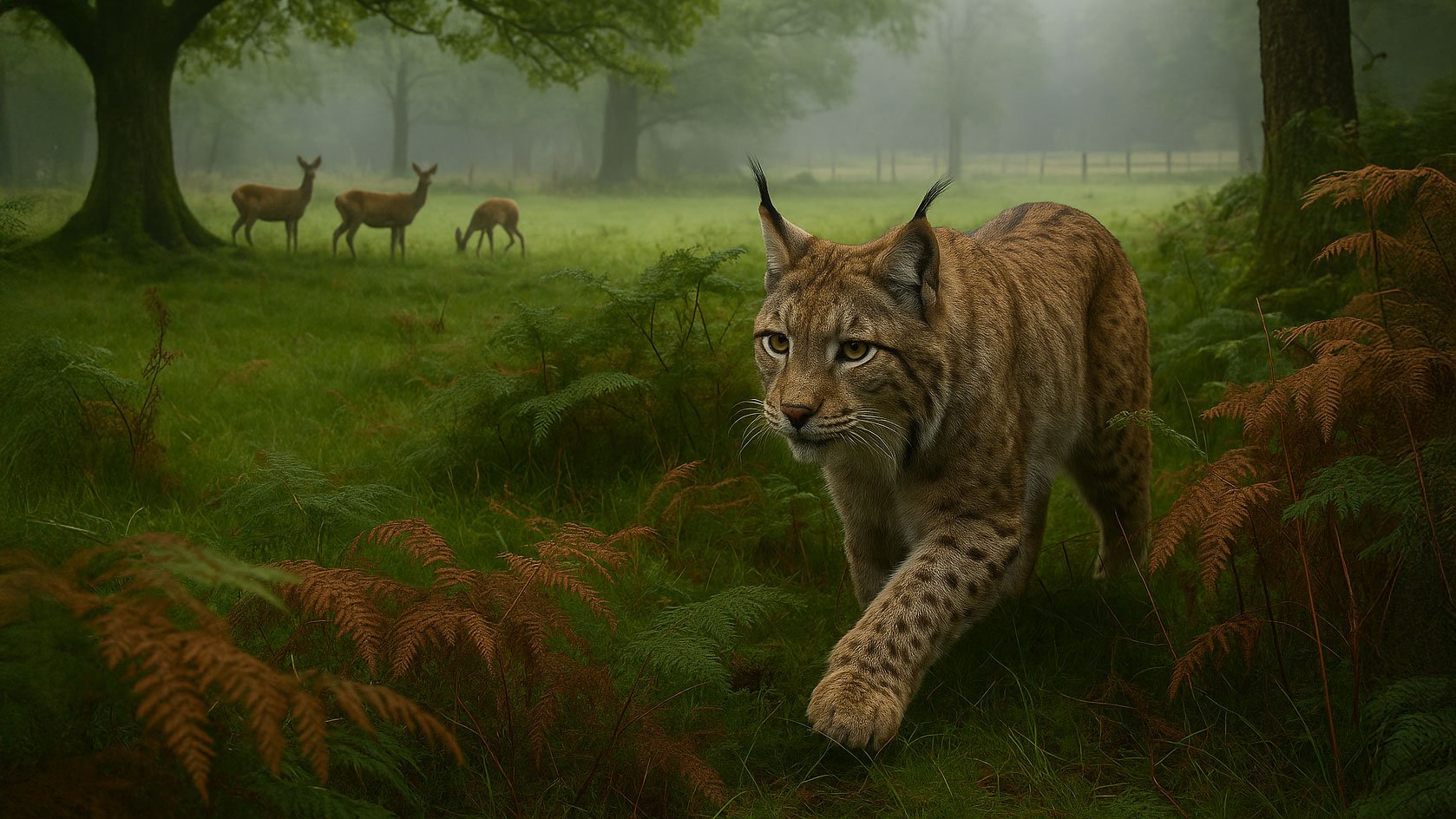Why Rewilding the Lynx Is the Right Move for Britain — A Factual Counter to Fear-Based Farming Concerns
The recent article in The Independent, titled “Releasing lynx into the wild would be disastrous for Britain’s farmers,” presents a well-meaning but ultimately flawed critique of lynx reintroduction. It leans heavily on anecdotal fears and speculative scenarios while glossing over a mountain of data and successful case studies from across Europe. It’s time to set the record straight on why the Eurasian lynx belongs back in Britain’s wild spaces — and why their return could be not only safe but beneficial for the very people expressing concern.
Fact 1: Lynx Are Solitary, Elusive, and Prefer Deer Over Livestock
The central claim — that lynx will ravage sheep farms and create chaos — doesn’t hold up to real-world observation. Eurasian lynx, reintroduced in multiple European countries like Germany, Switzerland, and the Czech Republic, have shown a strong preference for wild deer. In fact, they help naturally manage burgeoning deer populations, which otherwise cause extensive damage to forests and crops.
Livestock predation is exceedingly rare. In Norway, for example, where lynx coexist with sheep farming, only around 2-3% of annual sheep deaths are attributed to lynx — and that’s with significantly higher lynx populations and less secure husbandry practices than what’s proposed for Britain.
Fact 2: Compensation Schemes Work
The article questions whether proposed livestock compensation plans would be enough. But again, we can turn to successful precedents: across Europe, compensation and prevention schemes — including better fencing, livestock guarding dogs, and even night enclosures — have dramatically reduced conflicts. These programs are often funded through public or NGO-backed conservation budgets. The proposed pilot in Kielder Forest is cautious and structured, and it includes compensation from the start. The idea that farmers would be abandoned to fend off predators is simply false.
Fact 3: Lynx Help Restore Balance to Over-Browsed Ecosystems
The article mocks the idea of “balance,” claiming that predators benefit at the expense of everything else. But that’s an oversimplification of complex ecological relationships. In ecosystems across the globe, apex and mesopredators — from wolves in Yellowstone to lynx in the Alps — play crucial roles in rebalancing food chains. In Britain, unchecked deer populations are devastating woodlands, preventing regeneration, and harming biodiversity. By preying on deer, lynx indirectly benefit countless other species, from songbirds to saplings.
Fact 4: Domestic Pets Are Not on the Menu
The article speculates that lynx could target pets in rural communities. This is fearmongering. Lynx are notoriously shy, nocturnal, and avoid human presence whenever possible. Their hunting instincts focus on prey like roe deer, not domestic animals. In decades of European monitoring, reports of lynx attacking pets are extremely rare. Foxes and dogs pose a far greater threat to rural pets than lynx ever will.
Fact 5: Rewilding Has a Proven Track Record
The idea that “rewilding has unintended consequences” is used in the article to undermine a scientifically sound and globally respected conservation practice. Every land-use decision has consequences, but rewilding — when done responsibly — restores resilience to degraded ecosystems. The reintroduction of sea eagles to Scotland, for example, faced similar opposition but is now celebrated. The lynx reintroduction proposals in Britain have been carefully planned with expert oversight, public consultation, and adaptive management protocols in place.
Fact 6: This Isn’t About Politics — It’s About Planetary Health
The author implies that the reintroduction of lynx is a symbolic gesture, signaling abandonment of farming in favor of imported food and lower emissions. But that interpretation misses the broader picture. Rewilding is not about replacing farming — it’s about integrating nature and agriculture in ways that restore long-term sustainability. Lynx reintroduction is part of a larger mosaic of regenerative land use, one that embraces both food production and ecosystem health.
Conclusion: A Future Where Lynx and Farmers Thrive Together
Britain once echoed with the quiet footfalls of the lynx. Its disappearance was not inevitable — it was the result of human expansion, hunting, and persecution. Now, we have the knowledge and responsibility to correct that mistake.
Rather than viewing the lynx as a threat, let’s see them for what they are: shy, forest-dwelling specialists who help keep ecosystems in balance. Let’s look to the dozens of reintroduction success stories across Europe — places where farmers, conservationists, and communities found common ground. Let’s lead with curiosity, caution, and compassion, not fear.
Bringing back the lynx isn’t a disaster waiting to happen — it’s a chance to heal a fragmented landscape, restore a lost native species, and show the world that the UK can be a leader in coexistence.

